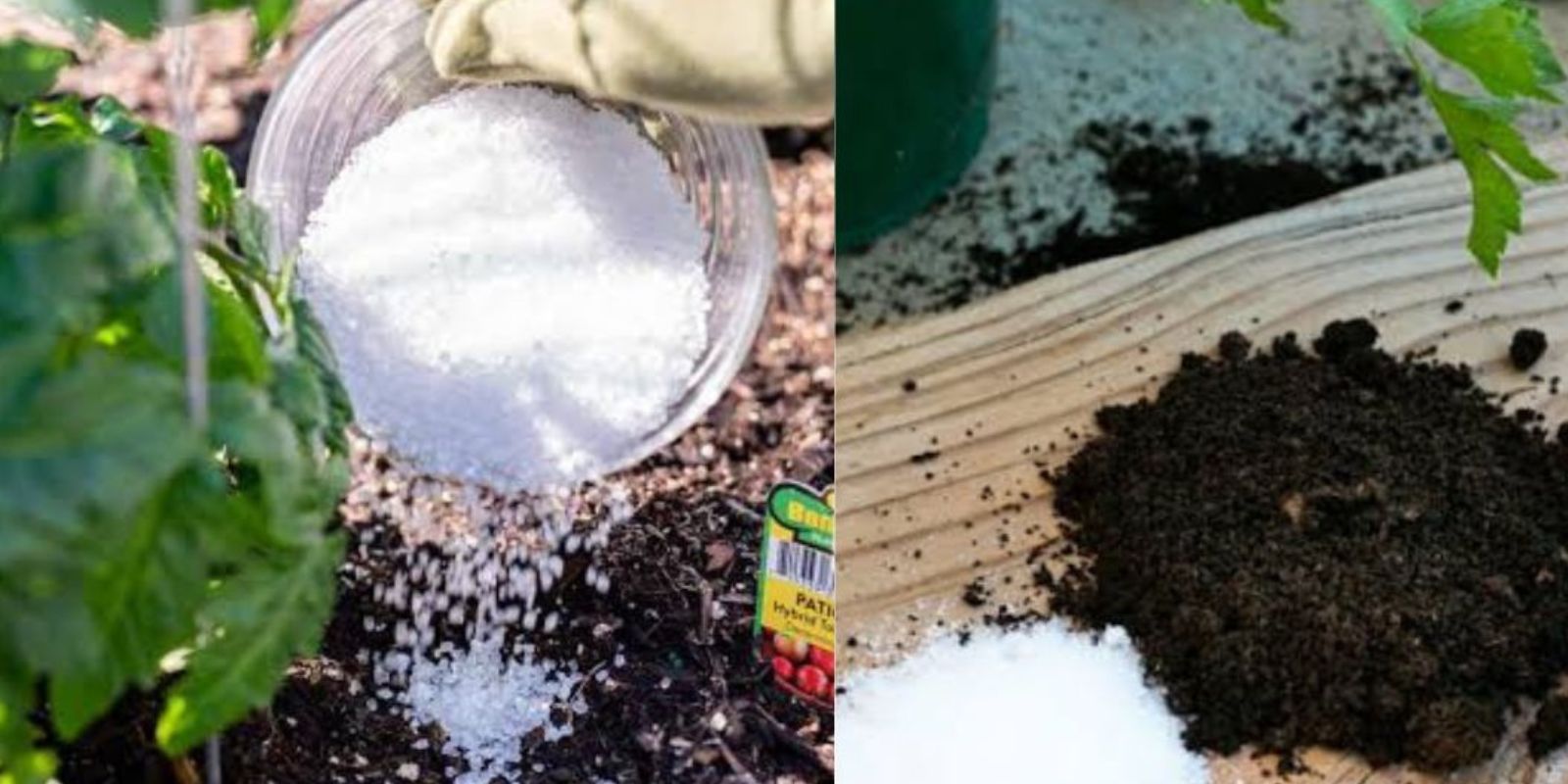Salt is more than just a staple of the kitchen—it has been used in gardening for centuries as a simple, affordable, and highly effective tool. When used correctly, salt can address a variety of garden challenges, from pesky weeds to stubborn pests. However, using salt in the garden requires a delicate balance to avoid damaging your soil and plants. This article delves into the benefits, techniques, and precautions of using salt in your garden.
Why Use Salt in Gardening?
Salt, particularly natural salts like Epsom salt and rock salt, can work wonders in a garden when used strategically. Here are a few reasons why gardeners swear by it:
- Weed Control: Salt is a natural herbicide that helps eliminate weeds by dehydrating their roots.
- Soil Improvement: Epsom salt, which is rich in magnesium and sulfur, can enhance plant growth by improving soil fertility.
- Pest Deterrent: Salt effectively repels pests such as slugs and snails without relying on harsh chemicals.
- Cost-Effective: Compared to commercial products, salt is an affordable and readily available gardening solution.
12 Steps to Use Salt Effectively in Your Garden
1. Select the Right Type of Salt
Not all salts are created equal. Opt for natural salts like Epsom salt, rock salt, or sea salt. Avoid table salt, as it contains additives like iodine and anti-caking agents that can harm your soil.
2. Target Weeds with Precision
For stubborn weeds, sprinkle salt directly onto their base. Alternatively, dissolve 1 cup of salt in 3 cups of water and pour the mixture onto the weeds. The salt will dehydrate them and inhibit regrowth.
3. Use Epsom Salt for Plant Health
Epsom salt is rich in magnesium, which is essential for photosynthesis. Dissolve 1 tablespoon of Epsom salt in 1 gallon of water and spray it on the leaves of plants like tomatoes, peppers, and roses for a growth boost.
4. Deter Pests Naturally
Sprinkle a thin line of salt around your garden beds or plants to keep pests like slugs and snails at bay. Salt irritates their bodies, discouraging them from entering your garden.
5. Treat Yellowing Leaves
Yellow leaves often indicate a magnesium deficiency. Use an Epsom salt solution (2 tablespoons per gallon of water) to rejuvenate your plants.
6. De-Ice Garden Paths
In colder months, use salt sparingly to melt ice on garden pathways. Be cautious to prevent salt from spreading into the soil where it could harm plants.
7. Combat Fungal Infections
Mix Epsom salt with water to create a solution that can be sprayed on plants affected by fungal diseases, such as powdery mildew or rust.
8. Revive Lawns with Salt Water
For bare patches on your lawn, apply a heavily diluted solution of Epsom salt to stimulate grass growth. Use sparingly to avoid soil salinity issues.
9. Maintain Healthy Soil Balance
If your soil lacks sulfur, Epsom salt can provide this vital nutrient. Add a small amount to the soil before planting crops like onions and garlic.
10. Control Invasive Weeds
For larger areas overrun by invasive weeds, apply a rock salt layer. Cover with mulch to prevent runoff. Be careful not to overapply, as it can make the soil infertile.
11. Improve Flowering and Fruiting
Sprinkle Epsom salt around the base of flowering plants and fruiting trees. The added magnesium promotes vibrant blooms and sweeter fruits.
12. Rinse and Rebalance the Soil
Salt can accumulate in the soil over time. Regularly water the area thoroughly to wash away excess salt and maintain soil health.
Precautions to Take When Using Salt in Gardening
While salt offers many benefits, improper use can harm your plants and soil. Follow these precautions to use it safely:
- Avoid Overapplication: Excessive salt can lead to soil salinity, making it difficult for plants to absorb water and nutrients.
- Test Your Soil: Check your soil’s pH and salinity levels before applying salt to avoid damaging your plants.
- Use as a Spot Treatment: Apply salt only where necessary, such as on weeds or pests, rather than across the entire garden.
- Protect Nearby Plants: Be mindful of surrounding plants when applying salt to weeds or pathways.
- Monitor Weather Conditions: Avoid applying salt before heavy rain to prevent runoff into nearby soil or waterways.
Benefits of Using Epsom Salt vs. Rock Salt
- Epsom Salt: Ideal for plant health, soil enrichment, and pest control. Its magnesium and sulfur content enhances photosynthesis and nutrient absorption.
- Rock Salt: Best suited for weed control and de-icing. Use sparingly to avoid harming the soil.
Common Mistakes to Avoid
- Using Too Much Salt: This can lead to soil toxicity and harm beneficial microbes.
- Applying Table Salt: The additives in table salt can damage plants and soil.
- Skipping Dilution: Always dilute salt when using it as a spray or solution to minimize damage.
Conclusion: Unlock the Power of Salt in Gardening
Salt is an incredible, versatile tool for gardeners when used correctly. From controlling weeds to enriching soil and deterring pests, its applications are as vast as they are effective. However, moderation and precision are key to reaping its benefits without causing harm.
Have you tried using salt in your garden? Share your experiences or tips in the comments below! Let’s learn and grow together.
#GardeningTips #SaltHacks #WeedControl #OrganicGardening #GardenLife #GardeningCommunity

